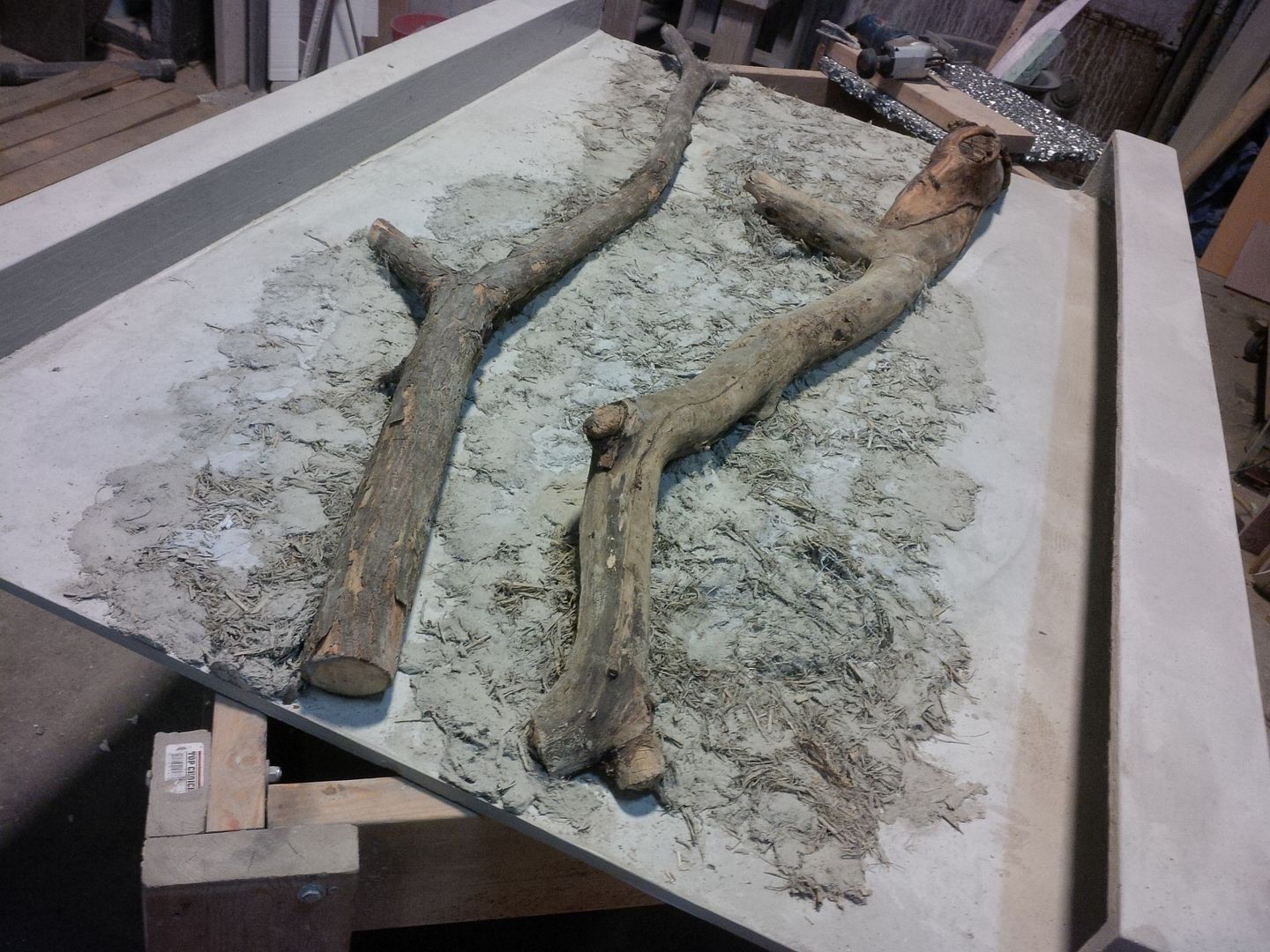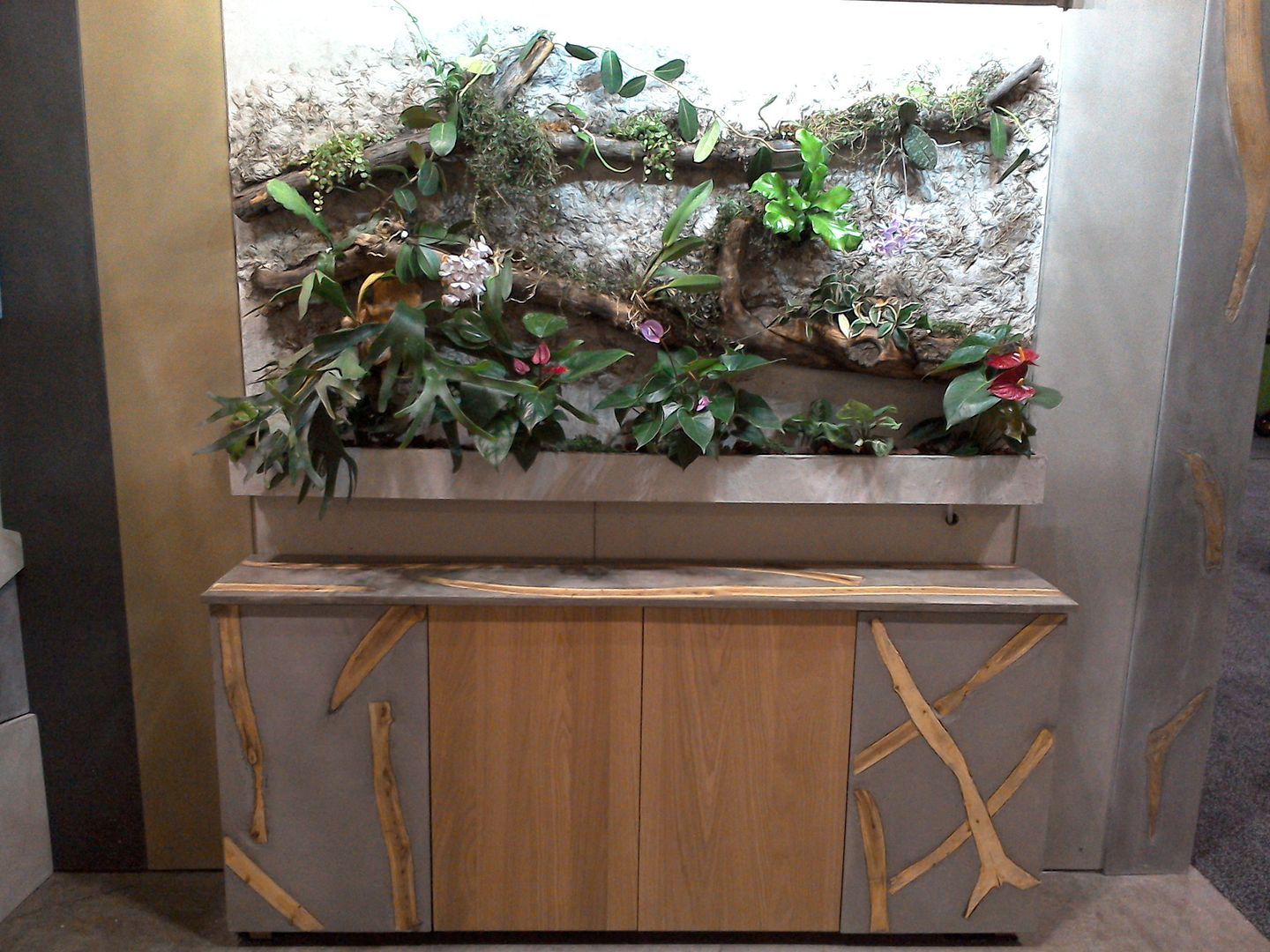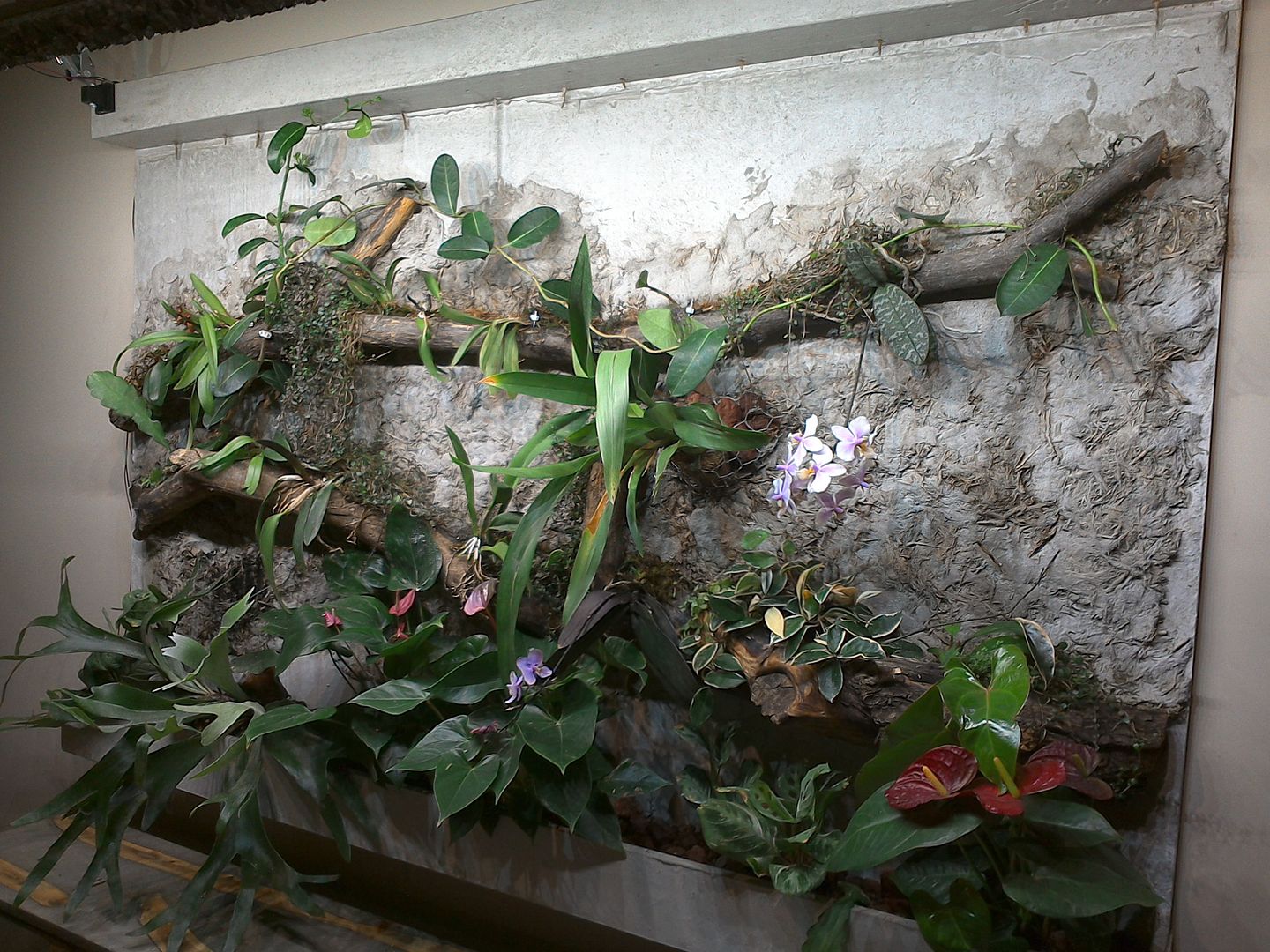A
ALToronto
Guest
No slippers on this one - yet. I'm hoping to get some advice on how to get slippers growing on it. It's my 4th living wall, and the third of this general design.
In my business, I make architectural elements out of a concrete-like material, but with a chemical composition that gives it a much lower pH than regular concrete. A further treatment with lithium silicate drops the initial pH to about 9.0. this is what it looked like while it was being made:

The clamps, plywood and styrofoam are forming a basin at the bottom of the wall, to catch the runoff. The branches are from the December ice storm.
After the structural part of the wall is poured, we water down the remaining mix, add hemp fibres, and this time, some crushed olivine (magnesium monosilicate) for added magnesium. This is loosely placed on the surface and creates a very permeable surface that roots can attach to.

There is also a water reservoir at the top, with drilled holes in its bottom surface, with waxed wicks that let through only drops.
A few more treatments with acidic solutions, and the pH drops to 7 or so. The wall is ready for plants. My previous walls were exclusively orchids, but this time I decided to add some ferns, a hoya, a spathoglottis (Madagascar jasmine) and an epiphyllum. And stonecrop - a great filler plant when you need some greenery, fast. It grows anywhere.
Any soil-growing plant needs to have the roots rinsed off as much as possible. Most of them, I just tucked into the crevices between the branches and the wall. Orchids get attached with electrical cable clips. This is what the wall looked like right after I set it up for the Green Living Show.

The bottom basin has a brass fitting for a vinyl hose that drains away water into a bucket in the cabinet underneath. I filled the basin with lava rocks and put mostly anthuriums in it - they like the semi-hydro conditions.
Since the show, I moved the staghorn fern into the semi-hydro basin, where it's actually not doing too well - I didn't think you could keep a fern too wet, but this one seems to want it drier. I also added a few more orchids - three small Howeara's (Lava Burst), a Sharry Baby, a phal and two bulbo's. Still lots of room for more orchids - any suggestions for suitable slippers?
The lights are chinese-made 5W LED's, 5000 and 3000K, adhered onto a strip of aluminum foam, attached to the wall with torn-down IKEA work lamps. Not the prettiest, but functional. Fourteen diodes total over 180 cm.
Here are tonight's photos, a month since the wall was populated.





In my business, I make architectural elements out of a concrete-like material, but with a chemical composition that gives it a much lower pH than regular concrete. A further treatment with lithium silicate drops the initial pH to about 9.0. this is what it looked like while it was being made:

The clamps, plywood and styrofoam are forming a basin at the bottom of the wall, to catch the runoff. The branches are from the December ice storm.
After the structural part of the wall is poured, we water down the remaining mix, add hemp fibres, and this time, some crushed olivine (magnesium monosilicate) for added magnesium. This is loosely placed on the surface and creates a very permeable surface that roots can attach to.

There is also a water reservoir at the top, with drilled holes in its bottom surface, with waxed wicks that let through only drops.
A few more treatments with acidic solutions, and the pH drops to 7 or so. The wall is ready for plants. My previous walls were exclusively orchids, but this time I decided to add some ferns, a hoya, a spathoglottis (Madagascar jasmine) and an epiphyllum. And stonecrop - a great filler plant when you need some greenery, fast. It grows anywhere.
Any soil-growing plant needs to have the roots rinsed off as much as possible. Most of them, I just tucked into the crevices between the branches and the wall. Orchids get attached with electrical cable clips. This is what the wall looked like right after I set it up for the Green Living Show.

The bottom basin has a brass fitting for a vinyl hose that drains away water into a bucket in the cabinet underneath. I filled the basin with lava rocks and put mostly anthuriums in it - they like the semi-hydro conditions.
Since the show, I moved the staghorn fern into the semi-hydro basin, where it's actually not doing too well - I didn't think you could keep a fern too wet, but this one seems to want it drier. I also added a few more orchids - three small Howeara's (Lava Burst), a Sharry Baby, a phal and two bulbo's. Still lots of room for more orchids - any suggestions for suitable slippers?
The lights are chinese-made 5W LED's, 5000 and 3000K, adhered onto a strip of aluminum foam, attached to the wall with torn-down IKEA work lamps. Not the prettiest, but functional. Fourteen diodes total over 180 cm.
Here are tonight's photos, a month since the wall was populated.
















